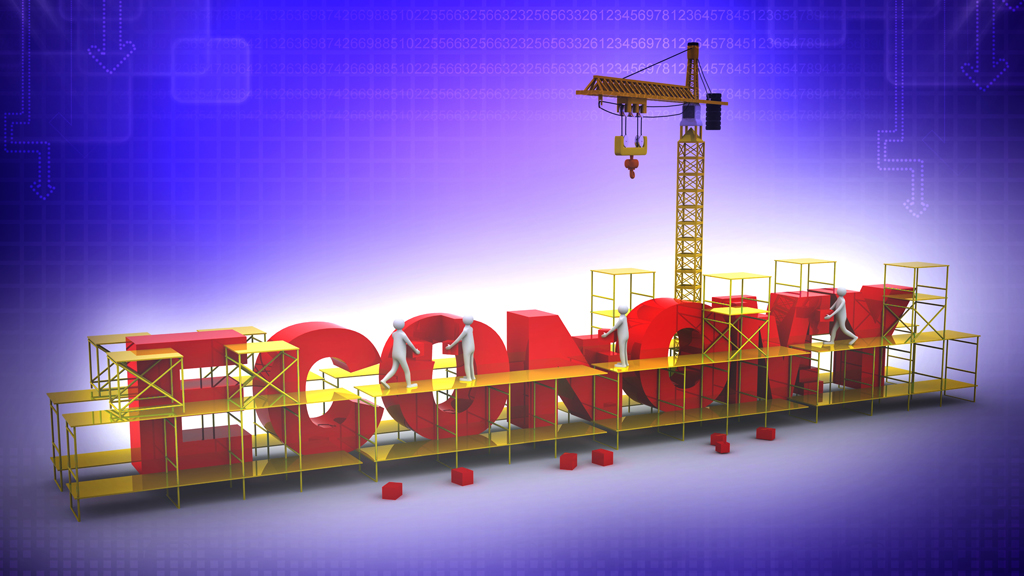The construction economies of the U.S. and Canada are moving on a forward trajectory but at different speeds and with some key differences, according to a series of 2022 economic outlooks.
While North American construction and engineering industries felt the impact of both the pandemic and a short recession in 2020, Deloitte’s 2022 Engineering and Construction Industry Outlook report points to strong growth due to both a federal infrastructure plan and underlying industry trends.
The report cited data from the U.S. Census Bureau and stated “the industry responded very well during the pandemic and has come out strong in the recovery period. Total construction spending recovered and peaked at $1.57 trillion in July 2021, a record high for the series and 12 per cent higher than 2019 average levels.”
Deloitte also conducted a recent survey where 91 per cent of engineering and construction respondents called the business outlook of their industry “somewhat or very positive,” with a 23 per cent increase from the previous year. The Associated Builders and Contractors’ Construction Confidence Index, which had dropped to 38.1 per cent in March 2020 recovered and stayed at levels of 60-plus per cent during the first half of 2021.
Residential activities and non-residential growth because of the $1 trillion U.S. Infrastructure Investment and Jobs Act (IIJA) were cited as the main drivers of the construction economy.
“Looking into the two segments in more detail, residential activities continued to stay strong despite rising material prices and the spread of the coronavirus Delta variant. The segment posted record spending levels of about $770 billion in July 2021, 27 per cent higher than last year and almost 30 per cent higher than pre-pandemic levels,” the report stated.
A Business Development Bank of Canada (BDC) 2022 Economic Outlook blog post by BDC vice president Pierre Cleroux gave a lower-key assessment of Canada’s economic outlook for 2022. The pandemic is “largely under control for the moment” he said, but “the economy is still facing the adverse consequences of the pandemic, which will continue well into 2022 and consequently moderate growth in the country.”
“The Canadian economy is expected to continue to grow, but the gains will be more modest than could be expected at this point in the business cycle,” Cleroux said.
U.S. nonresidential spending growth remained weak for most of 2021, with spending across educational, office, transportation, health care and commercial facilities seeing the largest year-over-year decline in July 2021. Spending of $550 billion through the IIJA over the next five years on upgrading roads, bridges and other major infrastructure projects, passenger and freight rail, water infrastructure and public transit will provide a significant boost.
Potential stumbling blocks for the engineering and construction industries include supply chain disruption and sourcing challenges as the pandemic exposed weakness in the current system, the Deloitte report stated. Pent-up demand for key materials as global construction activity resumed was one of the reasons cited for the disruption along with the movement of materials due to increased congestion at major ports.
Leroux said supply chain problems will persist in Canada throughout 2022.
“When bottlenecks affect upstream products, such as energy products and metals, the scarcity of these products will lead to greater spillover effects by restricting the production of other goods,” he said.
A 2022 Construction Industry Outlook from HUB Construction Insurance and Risk Services stated supply chain issues may become the new normal in Canada.
“The key to mitigating supply chain issues comes down to resilience: engagement with suppliers, creating materials reserves and developing backup suppliers. It’s also important to reconsider reliance on foreign-made supplies and just-in-time materials sourcing, making it important to establish local and regional suppliers when possible,” the outlook stated.
Ongoing labour shortages were another cause for concern for the industry as it enters the new year, compounded with a loss of jobs in the initial stages of the pandemic.
“By August 2021, the industry had yet to recover about 20 per cent of jobs lost to the pandemic, while many other labour-competing industries, such as transportation and warehousing, had recovered all jobs lost,” the report stated.
Another factor compounding labour issues is a lack of qualified candidates, the Deloitte report said, as the industry undergoes a technological shift and demand for data engineers, data scientists, coders and developers increases.
“The penetration of digital technologies requires workforce optimization both in terms of skills needed to perform the job and the knowledge of digital technologies such as digital twins, smart project management, and connected construction,” the Deloitte report stated.
The HUB construction outlook cited BuildForce Canada data that said, “by 2030, the average Canadian construction worker will be 42 years old, and young people aren’t lining up work in construction.”
“Over the next decade, firms need to recruit nearly 310,000 construction workers to replace those retiring and to meet demand; one report estimates the industry could be short 81,000 workers by 2030,” the outlook stated citing Canada Immigration News.
Technology has also worked to the benefit of engineering and construction firms as digital supply networks, building information management, predictive maintenance, asset tracking and modular and prefabricated construction are on the rise.
“In 2022, connected construction will likely be a catch-all for major digital investments to connect, integrate, and automate operations and bring the entire value chain onto a secure, intelligent infrastructure. Growing digital and technology capability requirements from the commercial construction segment are also likely to push adoption,” the Deloitte report noted.
The BDC economic outlook cited increased technology and automation investment as a solution to the ongoing labour shortage.
“Automation is not just about robots. It is any technology that performs repetitive tasks with reduced human input. Automation frees up workers for value-added tasks. It can be as simple as using software to automate sales forecasts and customer service, or it can be as complex as using computerized machining tools to automate a machine shop,” Cleroux said.
Follow the author on Twitter @JOCFrey.











Recent Comments